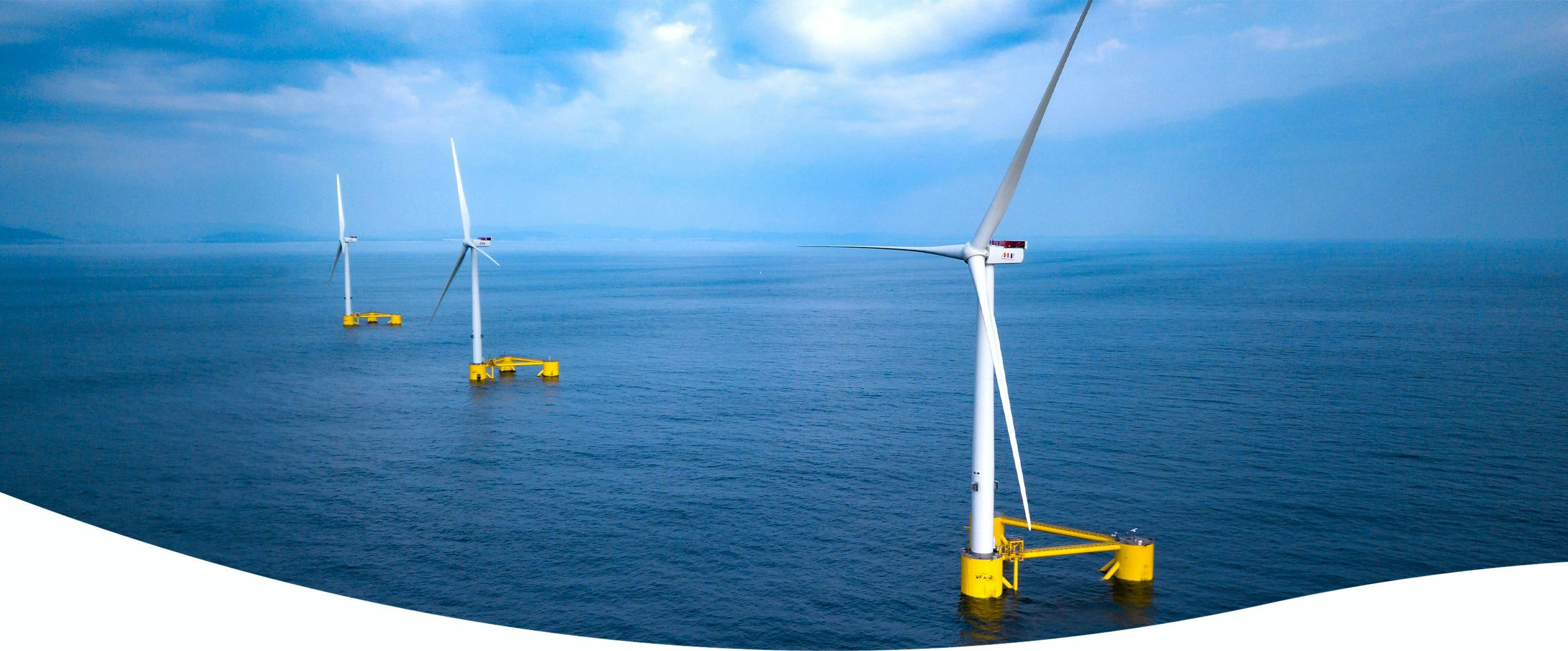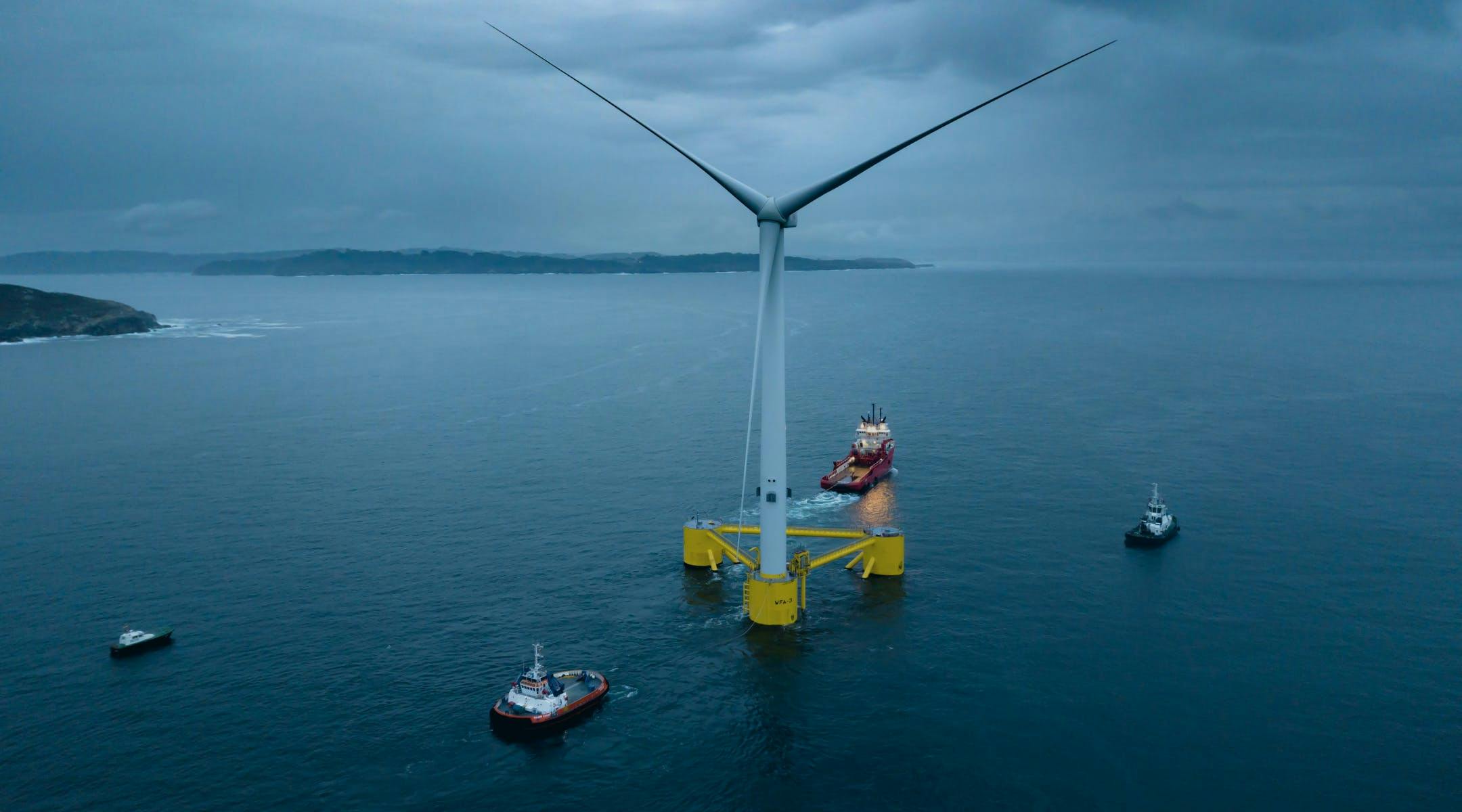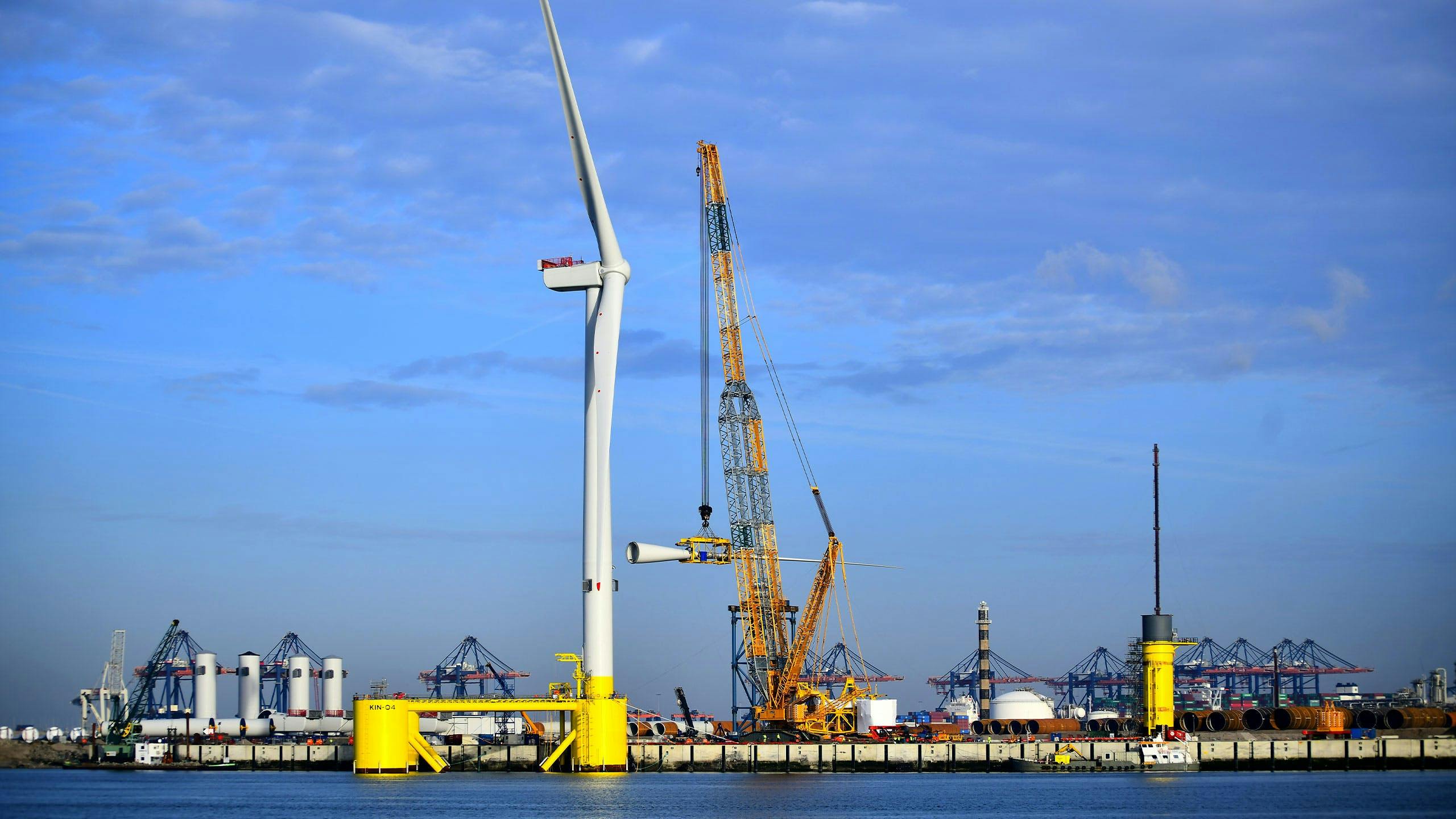
The WindFloat® portfolio includes four semi-submersible floating platform products that combine a unique set of proven features to provide unparalleled performance in the harshest environments.
Each WindFloat® is designed to include a smart hull trim system that adapts to metocean conditions by shifting water ballast between columns to keep the wind turbine tower at vertical, maximizing output and minimizing loads.

Designed for performance
WindFloat® platforms achieve stability via a combination of water plane area (footprint), draft, and column diameter. The designs are scalable to accommodate the largest offshore wind turbines, efficiently managing loads with a minimum increase in structural mass.
The WindFloat® portfolio leverages Principle Power’s unparalleled operational track-record and includes four complementary 4th generation designs that offer developers industrialized, FEED-ready solutions for any floating wind project, with any metocean condition, any wind turbine model, and any supply chain preference.
WindFloat® platforms have an adjustable draft and can be designed for wind turbine integration in most ports. Pontoon-based designs are suitable for ultra-shallow wind turbine integration in ports as shallow as 8 meters. The additional buoyancy of pontoon-based designs minimizes column diameter and footprint, creating more options within established supply chains.
Perimeter column design – WindFloat T and WindFloat F – are optimized for wind turbines that use soft-stiff towers and center column designs - WindFloat TC and WindFloat FC – are for wind turbines that use stiff-stiff towers. Both perimeter column and center column products are available in tubular and flat panel construction methods, ensuring compatibility with existing supply chains.

WindFloat Atlantic in operation during storm Dora, December 2020. Significant wave height up to 9 m.
WindFloat Atlantic in operation during storm Dora, December 2020. Significant wave height up to 9 m.
Passive ballast: flexible draft and added stability
The WindFloat® portfolio designs have ballast located at the bottom of each column, allowing lower draft for installation at various ports and larger draft for increased stability in operations.
Smart hull trim system: increased power production
Principle Power’s patented Smart Hull Trim System consists of a robust and fully redundant ballast system that moves water from column to column to compensate for changes in average wind velocity and direction, keeping the tower’s mean pitch angle at zero degrees.
The system is entirely closed loop, meaning no water is exchanged between the platform and the environment. Compared to fully passive semi-submersibles, WindFloat® optimizes power output and reduces structural loads during operation.
The Smart Hull Trim System has demonstrated gross Annual Energy Production (AEP) gains between 1.0-2.5% across our global project portfolio, enabling significant savings in steel weight, and reducing loads on wind turbine components.
The system learns from real-world operational experience for continuous improvement, boosting revenue generation over the course of the 25+ year project lifetime.
Damping plates: dynamic stability
While all WindFloat solutions are designed for exceptional dynamic stability, patented damping plates fitted at the bottom of each column on the WindFloat T and WindFloat TC minimize wave and turbine induced motion, enabling the platform to stay light while performing as if it was a much larger structure (hydrodynamic added mass). The WindFloat F and WindFloat FC achieve this same level of stability and performance through pontoon structures fitted between each of the three columns.


Wind turbine agnostic
WindFloats® are designed to host any conventional commercial wind turbine with only software modifications and a site-specific tower. This flexibility allows developers to choose the best turbine for the project, balancing cost and performance. In addition, WindFloat® center column solutions have been optimized for the next generation of large, standardized turbines, offering more options within the same proven modules.
The wind turbine and floating platform form a highly coupled system that must be designed collaboratively to achieve optimal performance with minimal impact on the floating platform. Principle Power has class-leading experience in this space and works closely with all major wind turbine manufacturers and classification societies to assure designs meet site-specific customer requirements.
Flexible scaling
WindFloat® products scale flexibly to accommodate increasingly larger wind turbines with minimal additional steel mass while maintaining simplicity during operations and installation.
Scaling the WindFloat T from the 2 MW turbine installed on the WindFloat 1 prototype to the nearly 10 MW turbines installed at Kincardine showed that a 5x increase in turbine size could be met with an approximately 2x increase in platform weight. Studies with next-generation wind turbines, with capacities in the 15 to 20+ MW range, show that these scaling efficiencies continue to be a major benefit of the WindFloat® portfolio.
Let's get your project floating
Contact our expert team to learn about how we can support your floating wind project.
The WindFloat® advantage
PerformanceFabricationInstallationInspection, Maintenance & RepairConnectionLocal CommunitiesEnvironmentServices
Project Development SupportConcept and Pre-FEED DesignFEED and Detailed DesignProject Execution SupportInspect, Maintain & RepairEnd of Life Services


